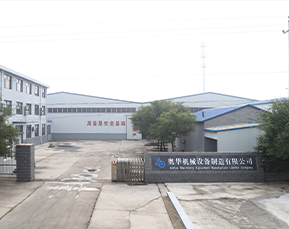 Afrikaans
Afrikaans  Albanian
Albanian  Amharic
Amharic  Arabic
Arabic  Armenian
Armenian  Azerbaijani
Azerbaijani  Basque
Basque  Belarusian
Belarusian  Bengali
Bengali  Bosnian
Bosnian  Bulgarian
Bulgarian  Catalan
Catalan  Cebuano
Cebuano  Corsican
Corsican  Croatian
Croatian  Czech
Czech  Danish
Danish  Dutch
Dutch  English
English  Esperanto
Esperanto  Estonian
Estonian  Finnish
Finnish  French
French  Frisian
Frisian  Galician
Galician  Georgian
Georgian  German
German  Greek
Greek  Gujarati
Gujarati  Haitian Creole
Haitian Creole  hausa
hausa  hawaiian
hawaiian  Hebrew
Hebrew  Hindi
Hindi  Miao
Miao  Hungarian
Hungarian  Icelandic
Icelandic  igbo
igbo  Indonesian
Indonesian  irish
irish  Italian
Italian  Japanese
Japanese  Javanese
Javanese  Kannada
Kannada  kazakh
kazakh  Khmer
Khmer  Rwandese
Rwandese  Korean
Korean  Kurdish
Kurdish  Kyrgyz
Kyrgyz  Lao
Lao  Latin
Latin  Latvian
Latvian  Lithuanian
Lithuanian  Luxembourgish
Luxembourgish  Macedonian
Macedonian  Malgashi
Malgashi  Malay
Malay  Malayalam
Malayalam  Maltese
Maltese  Maori
Maori  Marathi
Marathi  Mongolian
Mongolian  Myanmar
Myanmar  Nepali
Nepali  Norwegian
Norwegian  Norwegian
Norwegian  Occitan
Occitan  Pashto
Pashto  Persian
Persian  Polish
Polish  Portuguese
Portuguese  Punjabi
Punjabi  Romanian
Romanian  Russian
Russian  Samoan
Samoan  Scottish Gaelic
Scottish Gaelic  Serbian
Serbian  Sesotho
Sesotho  Shona
Shona  Sindhi
Sindhi  Sinhala
Sinhala  Slovak
Slovak  Slovenian
Slovenian  Somali
Somali  Spanish
Spanish  Sundanese
Sundanese  Swahili
Swahili  Swedish
Swedish  Tagalog
Tagalog  Tajik
Tajik  Tamil
Tamil  Tatar
Tatar  Telugu
Telugu  Thai
Thai  Turkish
Turkish  Turkmen
Turkmen  Ukrainian
Ukrainian  Urdu
Urdu  Uighur
Uighur  Uzbek
Uzbek  Vietnamese
Vietnamese  Welsh
Welsh  Bantu
Bantu  Yiddish
Yiddish  Yoruba
Yoruba  Zulu
Zulu Different Types of Pulleys Used in Conveyor Belt Systems and Their Applications
Types of Pulleys in Conveyor Belts
Conveyor belts are indispensable in various industries, facilitating the smooth movement of materials from one point to another. A vital component of these conveyor systems is the pulley, which plays a crucial role in ensuring the effective operation of the belt. Understanding the different types of pulleys used in conveyor belts can provide insights into their functionality, efficiency, and suitability for specific applications.
1. Drive Pulley
The drive pulley is one of the most critical components in a conveyor belt system. It is responsible for providing the necessary power to move the belt and the materials it carries. Typically located at the head of the conveyor, the drive pulley is connected to a motor that generates the required torque. In many applications, drive pulleys are equipped with grooves or textures to enhance traction and reduce slippage. Depending on the design of the conveyor system, drive pulleys can vary in diameter and material, with common choices being steel and rubber.
2. Idler Pulley
Idler pulleys serve an essential purpose by supporting and guiding the conveyor belt in a smooth and stable manner. Positioned along the conveyor's length, idler pulleys help maintain the belt's tension and prevent sagging. They are generally situated between the drive and return sections of the belt. Unlike drive pulleys, idler pulleys do not transmit power but instead assist in keeping the belt aligned. Various types of idler pulleys exist, including flat, crowned, and segmented designs, each suited for different belt widths and applications.
3. Tail Pulley
As the name suggests, the tail pulley is located at the end of a conveyor system, allowing the return section of the belt to roll back toward the drive pulley. The tail pulley plays a crucial role in maintaining the tension of the belt, preventing it from sagging and ensuring smooth operation. Additionally, tail pulleys can be equipped with a rubber coating to increase friction, especially in applications where material contact occurs. Like the drive pulley, tail pulleys can vary in size and design based on the specific requirements of the conveyor system.
types of pulley in conveyor belt

4. Snub Pulley
The snub pulley is an integral part of certain conveyor designs, particularly those requiring enhanced belt tension or increased friction characteristics. Positioned between the drive pulley and the idler, the snub pulley is used to increase the contact angle of the belt on the drive pulley. This increase in contact results in improved traction and belt efficiency, reducing the chances of slippage. Snub pulleys are typically smaller than drive pulleys and can be an essential feature in systems where belt tension is critical.
5. Wing Pulley
Wing pulleys are specially designed to provide a larger surface area for materials to cling to while also minimizing the risk of material buildup. Their unique design features raised wings that help guide the belt while allowing any residual material to fall off during operation. Wing pulleys are commonly used in applications where bulk materials are conveyed, such as in mining or agriculture. Their design helps prevent the accumulation of debris, which can lead to belt wear and unplanned downtime.
6. Return Pulley
The return pulley is located at the opposite end of the drive pulley and is responsible for guiding the belt back to the loading point. By helping to direct the belt's return path, it plays a significant role in maintaining the overall efficiency of the conveyor system. Return pulleys can be either smooth or grooved, depending on the application and the nature of the material being transported.
Conclusion
In conclusion, the selection of the appropriate type of pulley is critical for the efficient operation of a conveyor belt system. Understanding the roles and functions of the various pulleys—drive, idler, tail, snub, wing, and return—can help in designing a system that maximizes productivity and minimizes maintenance. By harnessing the unique characteristics of each pulley type, industries can ensure that their conveyor systems operate smoothly and effectively, meeting the demands of their specific applications.
-
Revolutionizing Conveyor Reliability with Advanced Rubber Lagging PulleysNewsJul.22,2025
-
Powering Precision and Durability with Expert Manufacturers of Conveyor ComponentsNewsJul.22,2025
-
Optimizing Conveyor Systems with Advanced Conveyor AccessoriesNewsJul.22,2025
-
Maximize Conveyor Efficiency with Quality Conveyor Idler PulleysNewsJul.22,2025
-
Future-Proof Your Conveyor System with High-Performance Polyurethane RollerNewsJul.22,2025
-
Driving Efficiency Forward with Quality Idlers and RollersNewsJul.22,2025





























